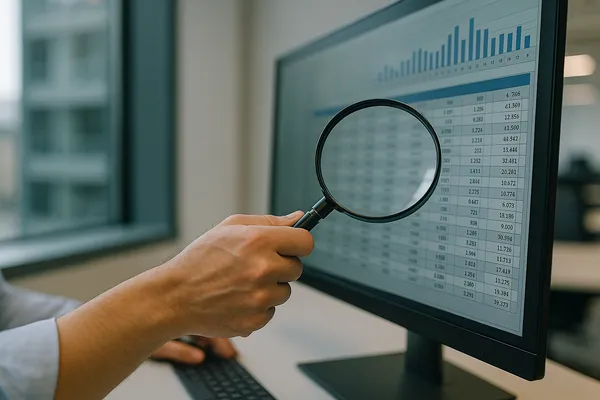Rigorous Financial Monitoring in Development Projects
Published on: Wed Feb 28 2024 by Ivar Strand
Following the Money: A Guide to Rigorous Financial Monitoring in Development Projects
Introduction
The foundation of any successful development partnership is fiduciary trust. Donors and taxpayers must have confidence that funds allocated for a specific purpose are used efficiently, ethically, and for that purpose alone. This trust is not assumed; it is built and maintained through rigorous, evidence-based financial monitoring.
A fundamental idea in our work is that effective financial monitoring is not a simple accounting exercise conducted from a distance. It is a comprehensive, hands-on process of “following the money” from the initial budget allocation to the final delivered good or service on the ground. This requires an integrated approach that we structure around three core pillars, designed to provide complete fiduciary assurance.
Pillar 1: Assessment of Internal Controls – Verifying the System
Before verifying individual transactions, we must first assess the system designed to manage them. This proactive and preventative stage examines the implementing partner’s internal controls: the set of rules, policies, and procedures that govern financial management and safeguard assets. A weak system is a leading indicator of future financial irregularities.
Our assessment focuses on several key areas:
- Segregation of Duties: Are the responsibilities for requesting funds, authorizing payments, executing transactions, and recording them in the books separated among different individuals? This is a primary defence against internal fraud.
- Authorization Processes: Is there a clear, documented, and consistently applied process for approving expenditures? Does it have defined authorization limits for different levels of management?
- Procurement Rules: Does the partner have transparent and competitive procedures for procuring goods and services? Are these rules being followed in practice?
- Financial Record Keeping: Are financial documents—invoices, receipts, bank statements—systematically filed, complete, and securely stored?
Identifying and addressing weaknesses in these internal controls is the most effective way to mitigate financial risk before significant funds are disbursed.
Pillar 2: Expenditure Verification – Tracing the Transactions
This pillar represents the core forensic component of financial monitoring. It involves selecting a statistically relevant sample of transactions from the implementing partner’s financial records and meticulously tracing the “paper trail” to ensure each transaction is valid, accurate, and legitimate.
For each selected transaction, our verification process follows a precise sequence:
- Start with the entry in the accounting ledger or cashbook.
- Trace it back to the proof of payment, typically a bank statement or signed payment voucher.
- Link this to the approved payment request, signed by the appropriate authority.
- Connect this to the original supplier invoice, which should be detailed and legitimate.
- Finally, match the invoice to the proof of delivery, such as a signed goods-received note or a certificate of completion for services rendered.
A break anywhere in this chain—a missing invoice, an unapproved payment, a mismatch between the invoice and the goods received—is a red flag that signals a potential control failure or irregularity requiring further investigation. This is the essence of rigorous expenditure verification.
Pillar 3: Physical Verification – Confirming the Result
A clean paper trail is necessary, but it is not sufficient. The critical final step is to connect the financial data to the physical reality of the project. This pillar answers the ultimate question: did the funds spent actually produce the intended, tangible result?
Physical verification provides the definitive link between financial inputs and programmatic outputs. The process involves direct, on-site inspection to confirm:
- Existence of Assets: If funds were spent on 1,000 new desks for a school, are there in fact 1,000 new desks of the correct specification in the classrooms?
- Completion of Works: If a contractor was fully paid to construct a health clinic, does the clinic exist, is it functional, and is it built to the agreed-upon quality standards?
- Presence of Personnel: If salaries were paid to twenty community health workers, do these twenty individuals exist, are they known in the community, and are they actively performing their duties?
This step is the most effective defence against sophisticated fraud schemes involving phantom vendors, ghost employees, or collusion between suppliers and staff. Without physical verification, fiduciary assurance is incomplete.
Conclusion
These three pillars—a strong system, clean transactions, and tangible results—are interdependent and form the basis of comprehensive financial monitoring. Weak internal controls lead to questionable transactions, and a lack of physical verification leaves the door open to significant fraud. By integrating these three lines of inquiry, we move beyond basic accounting to provide donors and partners with unambiguous, verifiable assurance that funds are delivering their intended impact. This is the bedrock of fiduciary confidence.



